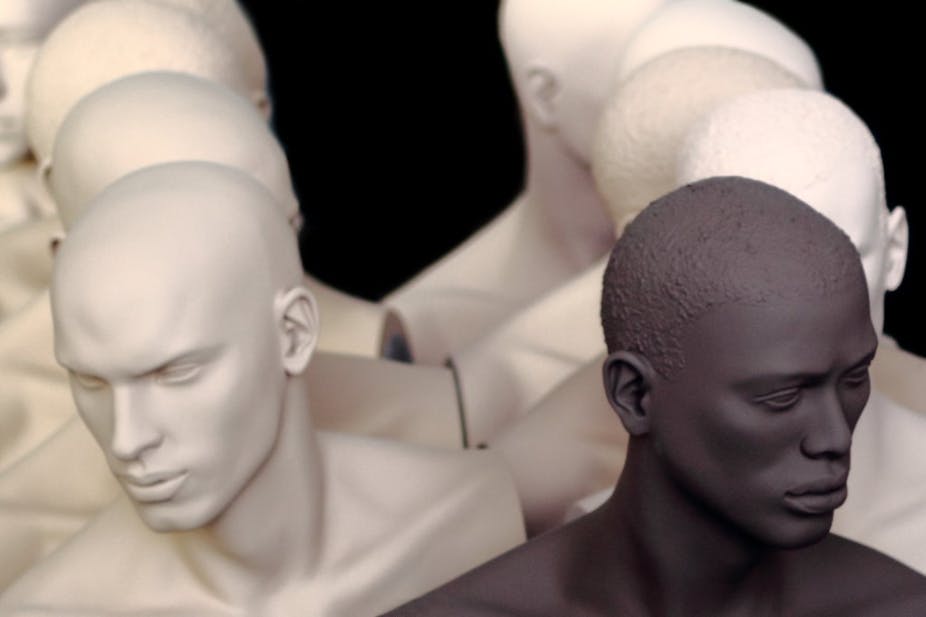In recent years there has been a significant shift in understandings of transgender identity. So often caught up with ideas about sexuality, the liberalisation of attitudes towards gays and lesbians has had an important part to play in this. Dominant trends in popular feminism have also made a contribution in challenging transphobia. It’s still common to think that identity is somehow the expression of our bodies, biologies, or genetic code. But discussions of transgender have contributed to an increasing openness to thinking about gender as an ongoing practice: as something we do, not something we have.
And it is in the context of this conceptual and attitudinal shift that Jess Row has written Your Face in Mine. This is a novel about race viewed through a transgender lens. It explores the possibilities opened up when racial identity stops being something that one passively “is”, but can be negotiated, reworked, acted upon.
The book begins when Kelly, white and in his late 30s, encounters his old school friend Martin on the racially demarcated streets of North-West Baltimore. Martin is post-operative, fully transitioned from half-Jewish white to African American. The ensuing story follows Kelly as his old friend recruits him to tell the story of his “racial reassignment”.

Though this spectacular tale of racial redesign is a work of science fiction, it throws light on the contemporary world. Row is critical of the way that existing cosmetic and surgical procedures are immersed in a global cultural politics of race where whiteness so often features as the touchstone of beauty. But by exploring how a variety of racial identities – African American, Korean, Chinese – might describe ideal bodies, Row does justice to a more complicated cultural terrain where the embodiment of racial difference becomes a means of exploration, imagination and self-transformation.
Row recognises that there is no qualitative point on the continuum from weaves and hair relaxers to plastic surgery and “permanent skin alteration” on which we can make a definitive judgement about racial rights and wrongs. While we cannot escape race’s dominant power relations, there is often a real complexity to our play with the physical markers of racial difference. Self-transformation is not always motivated by self-hatred or self-denial. Our bodies are not some inert and unchanging expression of an innate racial truth. Instead they are part of an unending process where our play with difference shapes who we are, and who we’re going to be.
This is a fraught terrain. It affords Row, as his protagonist puts it, little “wiggle room” as a white author who has centred his novel on a white man who has taken on an African-American identity. The premise of “racial reassignment” foregrounds a racist history of blackface and minstrelry. It recalls the historical moment of John Howard Griffin’s Black Like Me (1961), where “the Negro problem” was thought best ventriloquised by a white man with darkened skin.
Early reviews of the novel have commonly read Your Face in Mine as an expression of liberal white guilt and even as a troubling kind of racial tourism. Such verdicts are hardly surprising; indeed they express points that Row’s writing makes itself. Yet there is more to be said here that is lost in the rush to condemnation.
Much depends on how we interpret the novel’s trans analogy. Do we read transgender as a “correction” and the reinforcement of some biological or psychological truth? Or does transgender instead reveal something about the contingency of all gender practises? If the latter, then there is surely some real merit in thinking about the appeal of racialised differences. Not in order to reinforce and reinscribe race’s distinctions of status, value and worth, but as part of the important task of picking them apart.
As is often the case with the medical engagement with transgender, Martin’s self-diagnosed “Racial Identity Dysphoria Syndrome” presents itself as a psychological issue set right by surgical and pharmacological intervention. But Row refuses to understand race in his character’s terms. The conceit of “racial reassignment” gives him a way into thinking through a wider cultural terrain.
Alongside its physical racial transformations, Your Face in Mine describes a world of small, ordinary journeys across the boundaries of race: of white students finding meaning in 12th century Chinese poetry, of African Americans listening to Joni Mitchell and of maverick Thai doctors identifying with the diminutive figure of Prince, beckoning from his steamy roll-top bathtub in the video for When Doves Cry.
Row makes it clear that practises of engaging and negotiating racial difference are an important way in which we interact with the world, become new people, and become more like ourselves.

